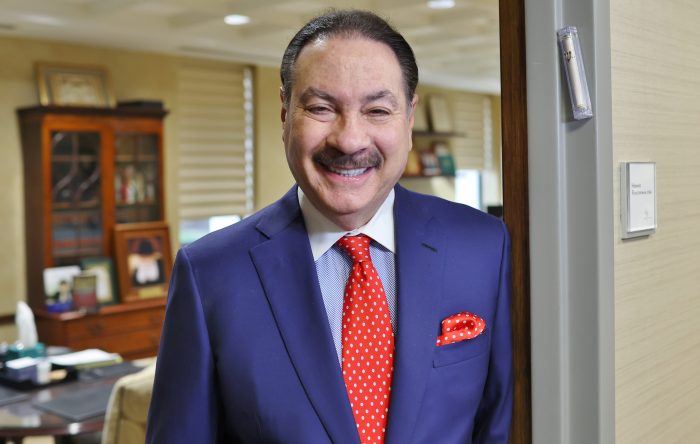Federal Reserve Chair Janet Yellen has indicated that the Fed will consider raising interest rates at its December meeting for the first time since 2006. Her confidence appears to stem primarily from strong, consistent employment growth, though other key factors such as global market performance and terrorism threats are in the decision-making mix. Market players and market makers are watching closely, knowing the stock market ride might be coming to a close.
One caveat to whatever reaction to a rate hike ensues is that investors have historically taken gains off the table in December only to drive the market upward in January, so I wouldn’t place too much credence in market behavior, assuming Yellen decides to test the waters with an increase tomorrow.
Click here for a guide to the Federal Reserve powers and what happens when rates move.
While some market reactions are more predictable than others, the relatively new phenomenon of marketplace (peer-to-peer) lending has yet to weather a rate hike. As a practical matter, we’re likely only talking about 25 basis points, which is hardly a shock to the system.
This should be seen as more of a test, with the understanding that Yellen can halt further increases or even reverse her decision at the next meeting in the event of a sustained negative reaction in the markets or unforeseen external threats to the US economy. Most economists and market players appear to believe the ramifications of a slight increase can be effectively sustained. Goldman Sachs has even ventured to predict multiple increases in 2016.
But it’s worth exploring the issue of liquidity, and where exactly capital in marketplace lending is being derived.
Marketplace (Alternative) Lending Overview
First, it’s important to draw a distinction between the major players in this arena. Companies such as Prosper and Lending Club are the most well-known among the peer-to-peer lenders in the consumer loan space. (Click here for a list of marketplace lending definitions.) These companies are essentially exchanges that pair investors—both private and institutional—and borrowers. Think of it as “crowd-funding” consumer loans.
Borrowers on these exchanges submit an application through an automated decisioning process that runs their credit and identifies certain risk factors before placing their requests on the exchange. Portions of their loan request, or in some cases the entire loan, can be purchased by an investor on the other side of the exchange. OnDeck, the largest US company in the small business space, provides a similar borrowing experience for small business owners in need of capital.
There are hundreds of companies that have entered both the consumer and small business lending space but are considered “direct lenders.” These are companies that evaluate applications and decide whether or not to fund them directly. Here again, many are using institutional funds from banks, hedge funds or investment pools to fund loans. Some loans move entirely to the investors or are “participated” out in packaged investments. There are, however, “balance sheet lenders” who maintain the entire portfolio, thereby assuming all of the investment risk.
Because the lending criteria is more automated and unsecured, rates on these investments are typically much higher than rates offered by traditional lenders. Consumers with compromised credit looking to pay down student loans or credit card debt are typically the prime targets for the consumer exchanges and direct lenders. Likewise, small businesses that have been locked out of the capital markets, regardless of their creditworthiness, have found a haven in this type of lending arrangement.
Searching For Yield
The growth of marketplace lenders such as Prosper, Lending Club and OnDeck has caught the attention of Wall Street in a major way. Projected returns for loans on the exchanges are typically in the high teens, and reported default rates (though there is debate about the efficacy of these numbers) hover between 4 percent and 8 percent.
We know that consumer default rates are the lowest in a decade, since the run-up to the banking crisis beginning in 2008. Recent reports indicate this trend may be in jeopardy, but the numbers are still remarkably low compared to the height of the crisis.
Given the low cost of capital and relatively stable consumer default environment, investors have been able to toy with marketplace lending with relative comfort. The same logic has applied to the dramatic recovery in the stock market, as institutional investors have been able to essentially participate in quasi-riskless arbitrage, borrowing cheap money and investing for substantial gains in equities. Yet because the equity market is still highly volatile compared to the seemingly consistent yields in marketplace lending, investors have been willing to provide liquidity to the exchanges.
Now that the Federal Reserve is emboldened enough by the employment recovery and is testing the waters with a rate increase, it calls the above strategy into question. The increase the Fed is considering is on the interbank lending rate, which is the cost at which banks borrow funds. While 25 basis points isn’t likely to disrupt very much, it will give pause to some institutional investors and cause them to re-evaluate their strategies going forward.
Because the consumer exchanges rely so heavily on institutional investment dollars and the space is relatively new, there’s a chance that some of the more conservative investors will pull back and seek higher ground. Hedge funds will no doubt continue to play a significant capital role on the exchanges, however.
Perhaps the more important trend to watch is consumer default rates. Employment growth has certainly been good for the economy and lower daily costs, such as gas prices, have provided some spending flexibility. But wage growth remains frustratingly low, which means the consumer is far from out of the woods.
The Upshot
The combination of higher borrowing costs and increasing default rates will challenge the marketplace lending model over the next 18 to 36 months. It’s likely that direct lenders with stricter underwriting policies will be better positioned to withstand market forces than the exchanges.
Tags & Sources: Federal Reserve Rate Increase, Janet Yellen, New York Times, Financial Times, Marketplace Lending, Prosper, OnDeck, Lending Club, Mayava Capital, Goldman Sachs, Peer-to-peer lending, alternative online lending, Consumer lending bubble, business loan consolidation, Business Loan Today, credit card lending, student debt, small business loans, consumer lending
(Photo: Federal Reserve Chair Janet Yellen)
































